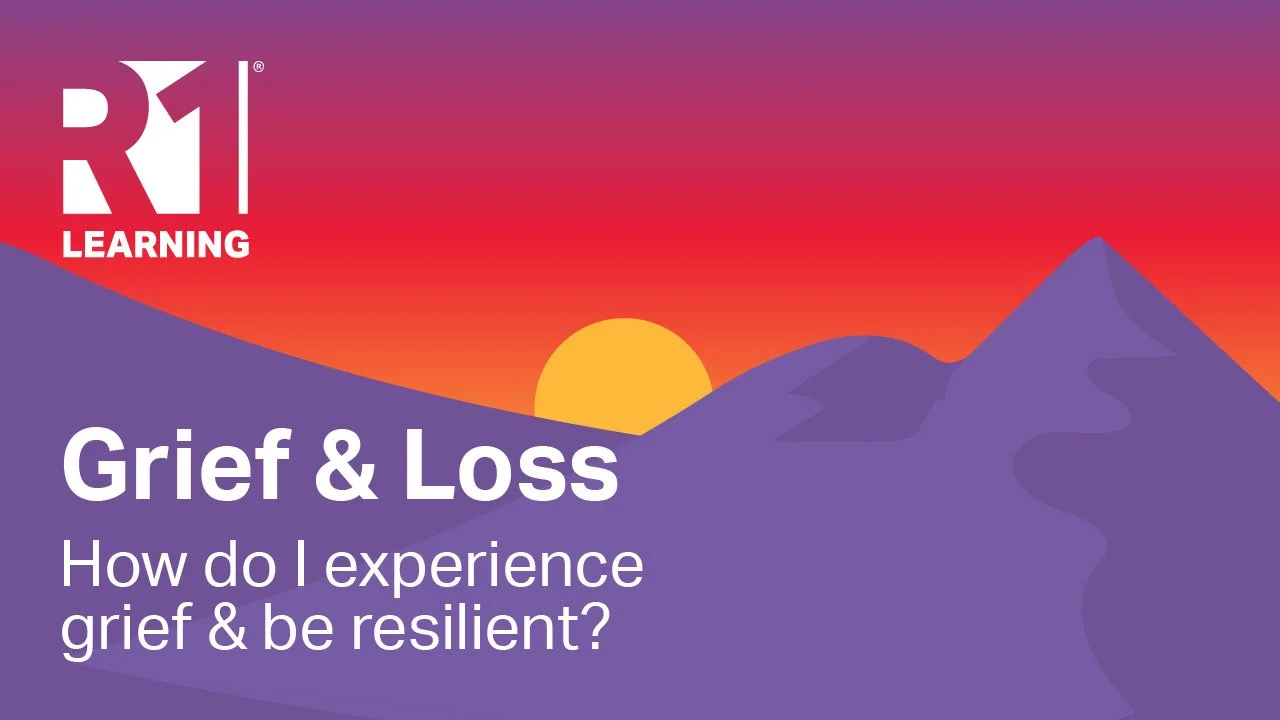7 States of Change — How Do I Experience Grief and Be Resilient?
Grief is a natural human response to coping with acute emotional pain from a loss or traumatic event. Although grief typically focuses on emotional dis-regulation, it affects thoughts, emotions, and behavior. While everyone experiences grief differently, there are common grief states, emotions, and coping responses.
The Grief & Loss Model presented is adapted from several leading theories for building self-awareness and the skills for change. Cognitive Behavioral Therapy (CBT), Dialectical Behavioral Therapy (DBT), Eye Movement Desensitization and Reprocessing Therapy (EMDR), and Motivational Interviewing (MI) are evidence-based practices best suited for helping individuals address trauma and events that make emotional regulation difficult. Additionally, practicing Trauma-Informed Care Principles is important when assisting individuals dealing with different types of traumas including:
Acute trauma – trauma resulting from a single incident
Chronic trauma – repeated and prolonged trauma such as domestic violence or abuse
Complex trauma – exposure to varied and multiple traumatic events, often of an invasive, interpersonal nature
The 7 Stages of Change Model, originally conceptualized by Elisabeth Kübler-Ross, and later expanded with the assistance of David Kessler, provides a comprehensive understanding of the complex behavioral and emotional journey that individuals undergo following a significant loss. This model evolved from Kübler-Ross's earlier work, the 5 Stages of Grief, which she introduced in her seminal book "On Death and Dying" in 1969. The original stages—denial, anger, bargaining, depression, and acceptance—were designed to describe the range of emotions that terminally ill patients experience.
The eventual 7 Stages of Change Model (and Change Curve), evolving from this original work, serves as a tool for making sense of the myriad behaviors and emotions involved in grief, offering validation and insight into a process that is deeply personal and unique to everyone. It is important to note that these stages are not experienced in a strict sequence or linear fashion, and individuals may move back and forth between stages or experience multiple stages simultaneously.
R1 has adapted these stages and reframes them as “7 States of Change” to highlight the following important considerations derived from recent literature reviews:
Personal Variability: Grief is a highly personal experience. The intensity and duration of each state can vary widely among individuals.
Non-linear Progression: Individuals may not go through these states in a specific order, for a specific amount of time, and they might revisit some states multiple times.
Emotional Regulation: Individuals often activate intense emotions and feelings during the grief and loss process and require emotional regulation and coping skills strategies.
Resilience Practices: Employing healthy coping skills can support individuals to respond, grow, and even thrive during and after times of significant grief and loss.
Support Systems: Having a supportive environment and trusted network can significantly influence how one navigates through the states of change and grief.
The purpose of today’s post is to share the basics of our new Grief & Loss topic so you can explore how best to use it with individuals experiencing loss and other traumatic events. Take a moment to review the definitions and examples for each of the 7 States of Change below. Then read through the Questions to Explore for yourself or with others in your organization. The R1 Grief & Loss Group Kits and R1 Discover App provide tools for engagement, education, and empowerment with individuals in your settings. Implementing these tools using Trauma-Informed Care Principles is critical for individual, practitioner, and organizational safety and success.
Explore R1 Discover — Interactive Engagement Tools
Grief & Loss Defined
The 7 States of Change Defined
The 7 States of Change are listed below. For each, you will find a brief definition, examples of the Discovery Card’s behavioral statements, and Questions to Explore. Please note that all of this information, and more, is listed in the Grief & Loss Topic Kit (which includes 1 Discovery Cards deck and 1 Facilitator Guide) located on the R1 Store.
Shock — Surprise & Upset: The state of surprise, upset, and emotional numbness (experiencing or learning about the event)
Emotions & Feelings: Pain, hurt, emptiness, emotional numbness (fight, flight, freeze)
2 of 5 Discovery Cards Examples:
I am upset about what happened (or is happening)
I am in shock; I feel numb
2 of 5 Questions To Explore Examples:
How and when did you get the news? What did you understand it to mean?
How can you emotionally ground yourself? (e.g. talk to a family member/friend, journal, go for a walk)
Denial — Disbelief & Avoidance: The state of confusion, disbelief, and avoidance
2 of 5 Discovery Cards Examples:
I am confused about what happened; I often wake up thinking it did not happen
I avoid thinking about what happened (e.g. staying busy, distracting myself)
2 of 5 Questions To Explore Examples:
How can you distract yourself or take a break from the pain? (i.e. walk, read, journal, paint, connect to others)
How is avoiding the situation helping you? How can you allow yourself space and time to deal with what happened?
Anger — Frustration & Hostility: The emotional state of annoyance, displeasure, or hostility, often expressed antagonistically
2 of 5 Discovery Cards Examples:
I am easily irritated or angered
I am frustrated and struggling to find meaning in what happened (or is happening)
2 of 5 Questions To Explore Examples:
What is frustrating you the most? How are you coping with your anger?
What are you noticing about your emotions? (e.g. where in the body, intensity, frequency, duration)
Depression — Low Energy & Sadness: The state of low mood and aversion to activity
2 of 5 Discovery Cards Examples:
I am tired and have little energy; I am sleeping more than usual
I feel like hiding or running away from everything
2 of 5 Questions To Explore Examples:
What has helped in the past when you felt overwhelmed or helpless? When you are ready to talk, who will be a safe person to connect with?
How can you distract yourself when you start thinking about the loss? What can you do to reframe your thinking about the loss into a more positive light?
Experiment — Hope & Exploration: The state of openness; seeking realistic and healthy solutions for coping
2 of 5 Discovery Cards Examples:
I am open and willing to try new things
I am asking for help and listening to others
2 of 5 Questions To Explore Examples:
What are some things you are exploring? What is that one thing that helps you loose track of time and refreshes you?
What brings you joy? How does it make you feel when it shows up?
Decision — Purpose & Action: The state of setting goals, taking action, and finding a new sense of purpose
2 of 5 Discovery Cards Examples:
I am creating a plan and taking action
I am setting new goals based on my life's current state
2 of 5 Questions To Explore Examples:
What are you discovering about yourself as you begin to move forward? Explain.
What is making you optomistic? How does it make you feel?
Integration — Renewal & Peace: The state of renewal, new beliefs and norms, acceptance, and peace
2 of 5 Discovery Cards Examples:
I am accepting that life has changed (my life and others' lives)
I understand that grief never ends; I am learning to live with it
2 of 5 Questions To Explore Examples:
What insights have you found on your journey of loss? How can you share your experience with others?
When you find yourself at peace, how does it feel? (in your body)
A Toolkit For Engagement — What’s In the Deck
Questions to Explore
Answer the following questions for yourself or with your team:
What do you find helpful about the 7 States of Change Model to effectively address loss, grief, and other traumatic experiences in your setting?
Which of the model components will be most useful for you and/or your team? 1) 7 States of Change, 2) Emotions & Feelings Identification, 3) Resilience Practices? Explain.
How does your knowledge of the 7 States of Change help you to better understand the individuals you work with?
How can you and your team use this information to engage and support individuals in your environment?
What leading evidence-based practices (i.e. CBT, DBT, EMDR, MI) will you employ in conjunction with the use of this tool?
What will be the benefit for you and others as you use this tool appropriately using trauma-informed care principles and leading evidence-based practices?
What is your major learning or takeaway from the post? Explain.
Thank you for reading this post and participating in this activity. Contact us if you would like to learn more about our Trauma-Informed Care solutions and the R1 Learning System. We look forward to hearing from you.
References
Kubler-Ross, D., & Kessler, E. (2014). On grief and grieving. Simon & Schuster.
Kubler-Ross Foundation, https://www.ekrfoundation.org/5-stages-of-grief/change-curve/
Lazarus RS. “Cognition and Motivation in Emotion.” American Psychologist 46:352–367, 1991
Scherer KR. “What Are Emotions? And How Can They Be Measured?” Social Science Information 44:693–727, 2005
Copyright 2025 R1 Publishing LLC / All Rights Reserved. Use of this article for any purpose is prohibited without permission.
A Special “Thank You” from R1!
Again, a special “thank you” and “hat’s off” to Sandy Rivers with Authentic Trainings LLC for her collaboration with R1 in the development of our Grief & Loss, Adverse Childhood Experiences (ACEs), and Trauma-Informed Care topics. Her knowledge, skills, experience, and passion for these topics have been invaluable to R1’s mission. We are grateful that she shares her talents with R1!
Engagement Tools
Integrating Discovery Card activities into your groups and one-on-ones will allow individuals to think concretely, increase self-awareness, build vocabulary, express themselves more effectively, and put insights into action. Visit the R1 Store to learn more about these evidence-based topics and models.
Here are a few ideas to help you learn more about R1 and engage others on this topic:
Share this blog post with others. (Thank you!)
Start a conversation with your team. Bring this information to your next team meeting or share it with your supervisor. Change starts in conversations. Good luck! Let us know how it goes.
Visit www.R1LEARNING.com to learn more about R1, the Discovery Cards, and how we’re creating engaging learning experiences through self-discovery.






















